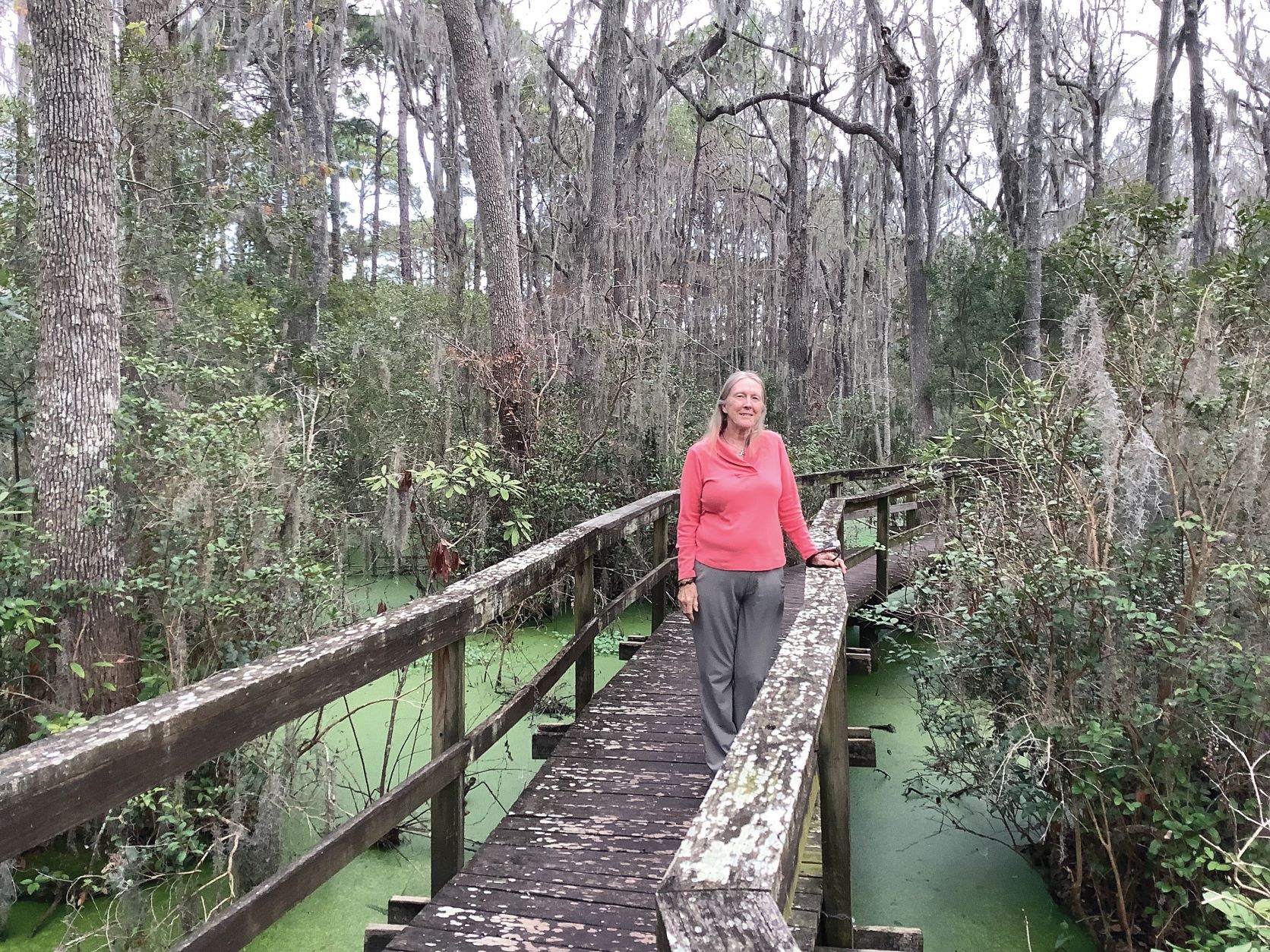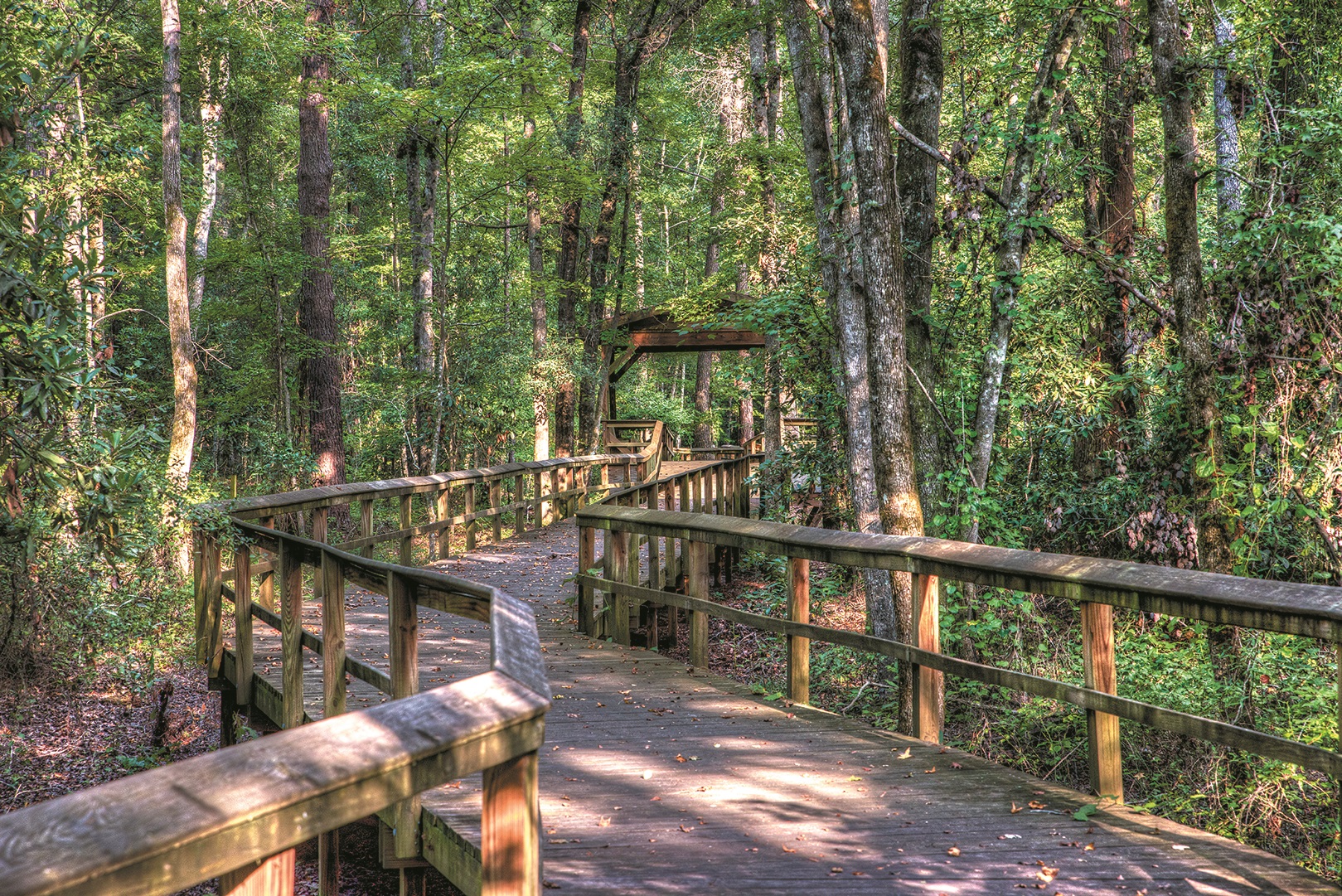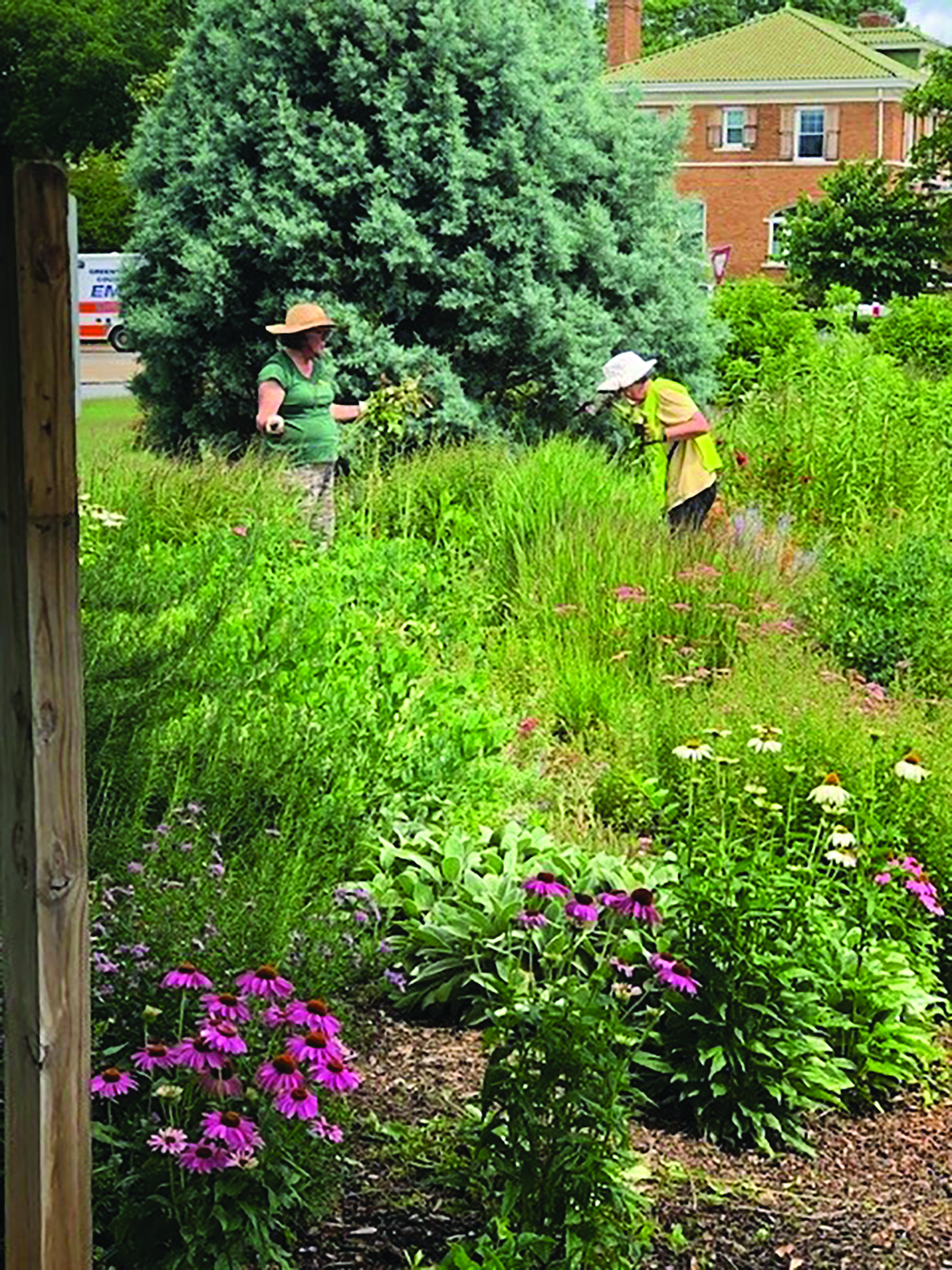It’s not hard to see the value of trees. They provide cooling shade in the summer, they absorb carbon dioxide, filter urban pollutants and help play a role in reducing soil erosion.
Many cities and towns realize that tree-lined streets and well-maintained tree canopies can improve everything from tourism to property values, environmental health and the mental health of residents.
“Trees are a key aspect of the environment on Hilton Head Island and the environment is the key driver in the [town’s] strategic plan. Trees contribute directly to the tourist experience and quality of life for those that live on Hilton Head, not to mention the flora and fauna that thrive here,” said Brian Eber, senior planner-environmental for the Town of Hilton Head Island.

Sally Krebs, who handled natural resources and sustainability for Hilton Head Island
for decades and who retired in 2022, is seen among black gum trees in a protected swamp.
Photo: Town of Hilton Head Island.
Hilton Head Island’s coastal community has a long-standing commitment to protecting and capitalizing on its natural beauty. It also has one of the most comprehensive tree ordinances in the state, originally passed in the 1980s, not long after the town was incorporated. Along with setting requirements for trees that must remain on a site, it required developers who were removing trees to replace them with similar types of trees, preserving a species mix. At the time, that requirement set it apart from most tree ordinances in the country.
A Tree City USA since 2000, the town has a robust natural resources and development plan. Before a tree is removed, the property owner must get a permit from the town, describing the tree and giving a reason for the removal, along with any proposed mitigation. Beyond the town’s approval, a property owners association or a private architectural review board approval may be necessary for land inside various communities on the island.
“The existing trees help to lessen air pollution and soil erosion and they improve surface water drainage by minimizing flooding and reduce drainage system cost. Trees also help reduce noise, heat, dust, glare and provide a visual buffer between adjacent development. Buffer standards help to reduce long term visual and real [stormwater] impacts from newly adjacent developed land,” Eber said. “The ordinance promotes alternatives to tree removal and does not allow for removals unless the viability of the existing tree is compromised. The trees that are removed are typically mitigated for by planting new native and biodiverse [trees].”
For ongoing maintenance of public land, Eber said the town works with arborists to proactively remove invasive plants, and provide extra nutrients to trees before and after construction of capital improvement projects.
When large storms blow through, Eber and an on-call arborist examine trees within the parks and on town property. The facility division maintains parks and pathways — and reaches out to the on-call arborists when necessary — while it does its daily inspection of parks.

The Walterboro Wildlife Sanctuary allows visitors to explore the wildlife of the ACE Basin.
In Walterboro, the city has maintained protections of trees through both staff and a citizen’s tree committee for about 20 years. The seven residents on the city’s tree protection committee represent the fields of landscape design, utilities, forestry and the city historic district, along with three at-large members. The committee advises the city on any changes or revisions to its environmental protection and open space ordinance that address tree protection.
“We have one member that has been on the board since its inception, which is unique and very beneficial for the committee and community alike. The City of Walterboro has made a concerted effort to preserve and maintain the urban tree canopy,” Parks Director Ryan McLeod said. “Having a tree protection committee and achieving Tree City USA status can help communicate to residents and tourist alike the investment the City of Walterboro has committed to urban forestry both for today and the future.”
While municipalities do their best to preserve trees, sometimes old or damaged trees must be removed for public safety.
“Anytime staff identifies a potentially dangerous tree we inspect it immediately and make a decision of the best course of action. The City of Walterboro is particularly vulnerable to tree failure within the Walterboro Wildlife Sanctuary that utilizes boardwalks, bridges and walking trails that allow visitors to traverse the headwaters of the [Ashepoo, Combahee and Edisto] Basin,” McLeod said. “When conditions are favorable, even a moderate weather event can wreak havoc on the boardwalks, surrounding vegetation and walking trails.”

Volunteers assist with the horticulture program of the City of Greenwood.
Photo: City of Greenwood.
In Greenwood, the “official” commitment to horticulture dates to the 1960s, when the SC Festival of Flowers started as a way to show off the gardens at the George W. Park Seed Co. The Greenwood-based company is one of the nation’s top mail-order gardening companies.
The festival draws tens of thousands of visitors to the city each year and showcases its gardens, topiaries and thriving horticulture community. Trees and flowers are also chosen with bees in mind, as the city’s pollinator partners committee has helped Greenwood become a Bee City USA.
“Green spaces are happy places. Trees and flower gardens raise the value of property and add beauty to our business district ... By incorporating these things into our city, we are creating a place that people want to live in or come visit,” said Diana Fetters, Greenwood’s superintendent of horticulture. “Having an attractive location is a plus when it comes to a business deciding whether to move into the area or not. This is something the horticulture staff takes great pride in — keeping the city colorful.”
While much of the horticulture work is completed by city staff, Greenwood has a volunteer program that allows people from the community to assist city employees with their jobs. That program also is helping educate the community on proper maintenance of plantings.
Greenwood’s horticulture department grows many of its own plants, a practice that saves money and allows staff to monitor the growing process. Having department volunteers work with staffers is a great way for the city to interact with the community, Fetters said.
Dozens of cities in South Carolina are recognized with Tree City USA honors, a national program that provides the framework to maintain and grow tree cover. To receive the designation, communities must show they meet standards for sound urban forestry management each year.
Hilton Head Island’s Eber has some advice for other municipalities looking to enhance tree maintenance program or attain Tree City USA status: “Go for it. This national standard provides great examples of proven ordinances and allows for the promotion of a rich overstory and understory that not only is pleasing to view, but helps promote a healthy environment for all living creatures.”
Walterboro, another Tree City USA, suggests cities also take advantage of the expertise of the SC Forestry Commission.
“Our regional forester has attended our tree protection committee meetings,” McLeod said. “They have informed us of various grant opportunities and shared their insight to celebrating Arbor Day.”
